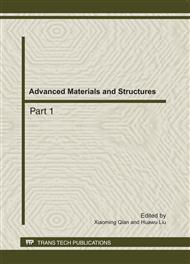[1]
M.C. Shaw, Metal Cutting Principles, Clarendon Press, Oxford, UK, 1991.
Google Scholar
[2]
G. Byrne, E. Scolta, Environmentally clean manufacturing process-a strategic approach, Ann CIRP. 42 (1993) 471-474.
DOI: 10.1016/s0007-8506(07)62488-3
Google Scholar
[3]
P.Young, G. Byrne, M. Cotterel, Manufacturing and the environment. Int J Adv Manuf Technol. 13 (1997) 488-493.
Google Scholar
[4]
K.V.B.S. Kalyan Kumar, S.K. Choudhury, Investigation of tool wear and cutting force in cryogenic machining using design of experiments, J Mater Process Technol. 203 (2008) 95-101.
DOI: 10.1016/j.jmatprotec.2007.10.036
Google Scholar
[5]
Z.Y. Wang, K.P. Rajurkar, M. Murugappan, Cryogenic PCBN turning of ceramics (Si3N4), Wear. 195 (1996) 1-6.
DOI: 10.1016/0043-1648(95)06645-4
Google Scholar
[6]
S.Y. Hong, Y. Ding, Cooling approaches and cutting temperatures in cryogenic machining of Ti-6Al-4V, Int J Mach Tools Manuf. 41 (2001) 1417-1437.
DOI: 10.1016/s0890-6955(01)00026-8
Google Scholar
[7]
N.R. Dhar, S. Paul, A.B. Chattopadhyay, Machining of AISI 4140 steel under cryogenic cooling-tool wear, surface roughness and dimensional deviation, J Mater Process Technol. 123 (2002) 483-489.
DOI: 10.1016/s0924-0136(02)00134-6
Google Scholar
[8]
K.A. Venugopal, S.Paul, A.B. Chattopadhyay, Growth of tool wear in turning of Ti-6Al-4V alloy under cryogenic cooling, Wear. 262 (2007) 1071-1078.
DOI: 10.1016/j.wear.2006.11.010
Google Scholar
[9]
R.Kovacevic, C.Cherukuthota, M.Mazurkiewicz, High pressure water jet cooling/lubrication to improve machining efficiency in milling, Int J Mach Tools Manuf. 35 (1995) 1459-1473.
DOI: 10.1016/0890-6955(95)00128-k
Google Scholar
[10]
M. Rahman, A. Senthil Kumar, M.R. Choudhury, Identification of effective zones for high pressure coolant in milling, Ann CIRP. 49 (2000) 47-52.
DOI: 10.1016/s0007-8506(07)62893-5
Google Scholar
[11]
A.R. Machado, J. Wallbank, The effect of extremely low lubricant volumes in machining. Wear. 210 (1997) 76-82.
DOI: 10.1016/s0043-1648(97)00059-8
Google Scholar
[12]
M. Rahman, A. Senthil Kumar, M.U. Salam, Evaluation of minimal quantities of lubricant in end milling, Int J Adv Manuf Technol. 18 (2001) 235-241.
Google Scholar
[13]
Y.S. Lio, H.M. Lin, Y.C. Chen, Feasibility study of the minimum quantity lubrication in high speed end milling of NAK 80 hardened steel by coated carbide tool, Int J Mach Tools Manuf. 47 (2007) 1667-1676.
DOI: 10.1016/j.ijmachtools.2007.01.005
Google Scholar
[14]
T. Thepsonthi, M. Hamdi, K. Mitsui, Investigation into minimal cutting fluid application in high speed milling hardened steel using carbide mills, Int J Mach Tools Manuf. 49 (2009) 156-162.
DOI: 10.1016/j.ijmachtools.2008.09.007
Google Scholar
[15]
M. Rahman, A. Senthil Kumar, M.U. Salam, M.S. Ling, Effect of chilled air on machining performance in end milling, Int J Mach Tools Manuf. 21 (2003) 787-795.
DOI: 10.1007/s00170-002-1394-z
Google Scholar
[16]
Y. Su, N. He, L. Li, X.L. Li, An experimental investigation of effects of cooling/lubrication conditions on tool wear in high-speed end milling of Ti-6Al-4V, Wear. 261 (2006) 760-766.
DOI: 10.1016/j.wear.2006.01.013
Google Scholar
[17]
Y. Su, N. He, L. Li, A. Iqbal, M.H. Xiao, S. Xu, Refrigerated cooling air cutting of difficult to cut materials, Int J Mach Tools Manuf. 48 (2007) 927-933.
DOI: 10.1016/j.ijmachtools.2006.07.005
Google Scholar
[18]
Lincoln Cardoso Brandoa, Reginaldo Teixeira Coelho, Alessandro Roger Rodrigues, Experimental and theoretical study of workpiece temperature when end milling hardened steels using TiAlN coated & PCBN-tipped tools, J Mater Process Technol. 199 (2008) 234-244.
DOI: 10.1016/j.jmatprotec.2007.07.049
Google Scholar


